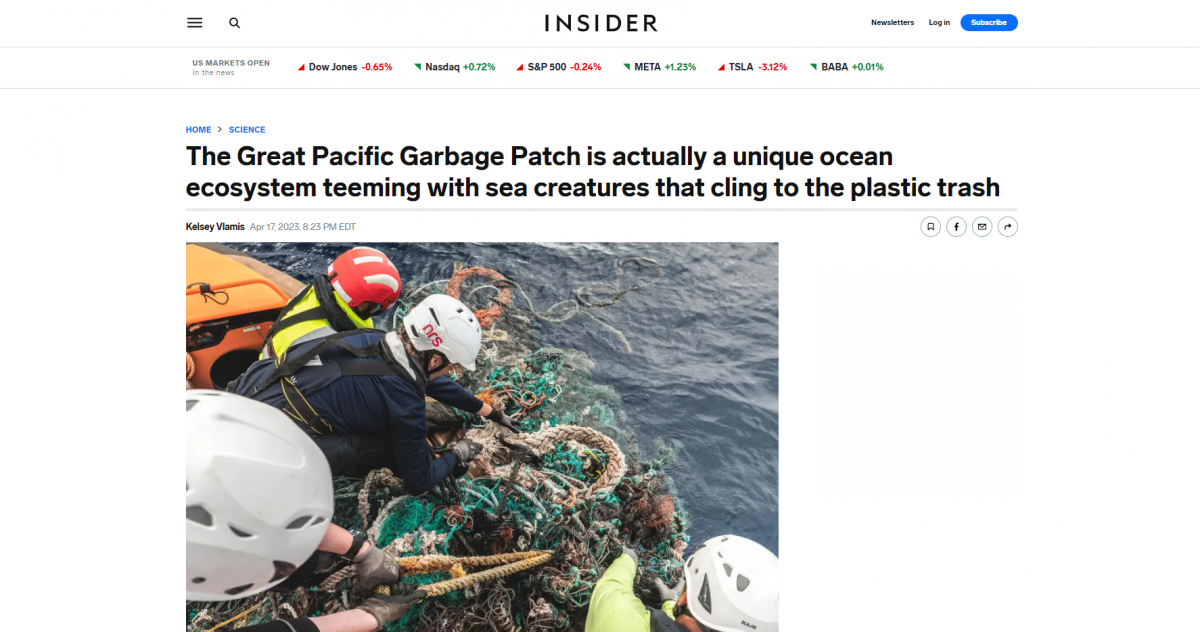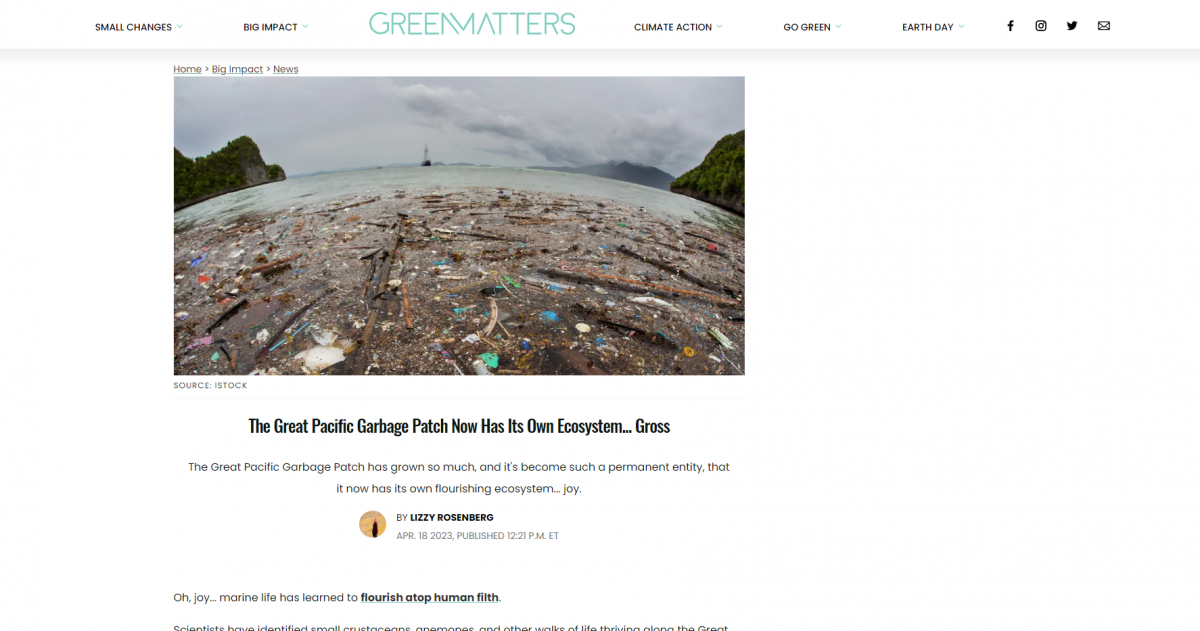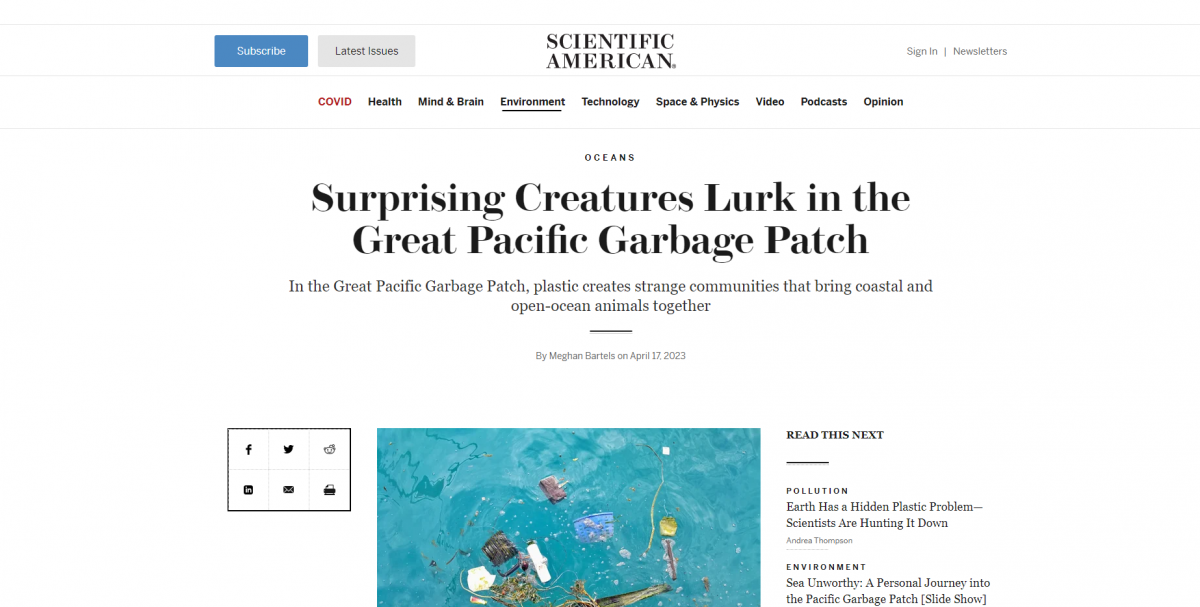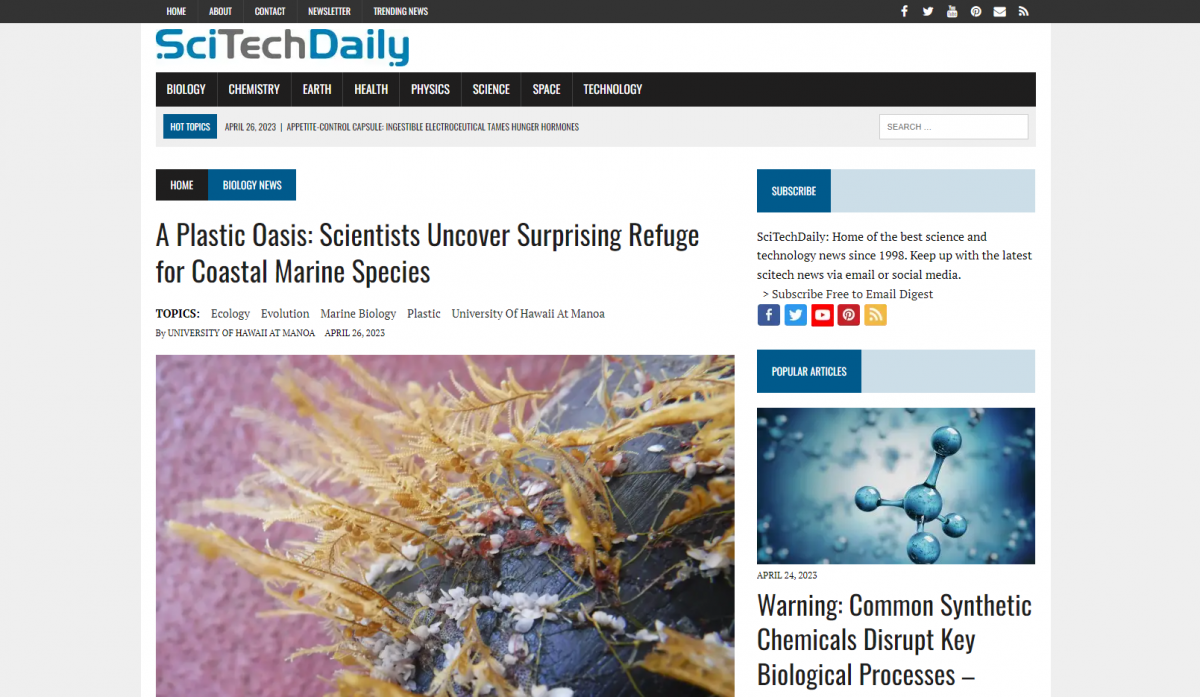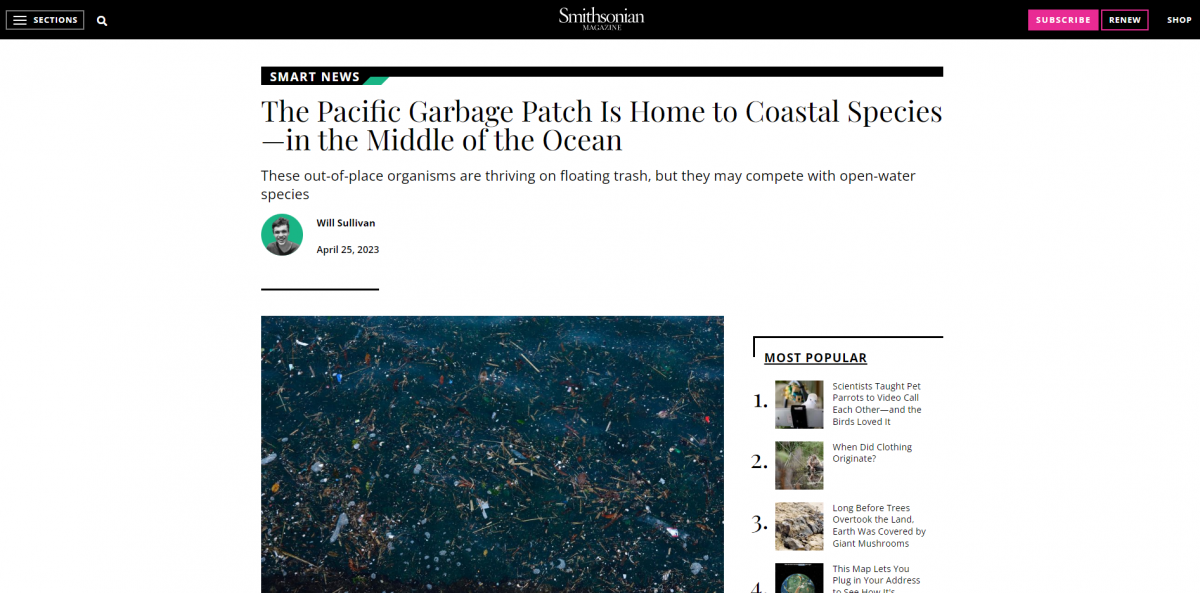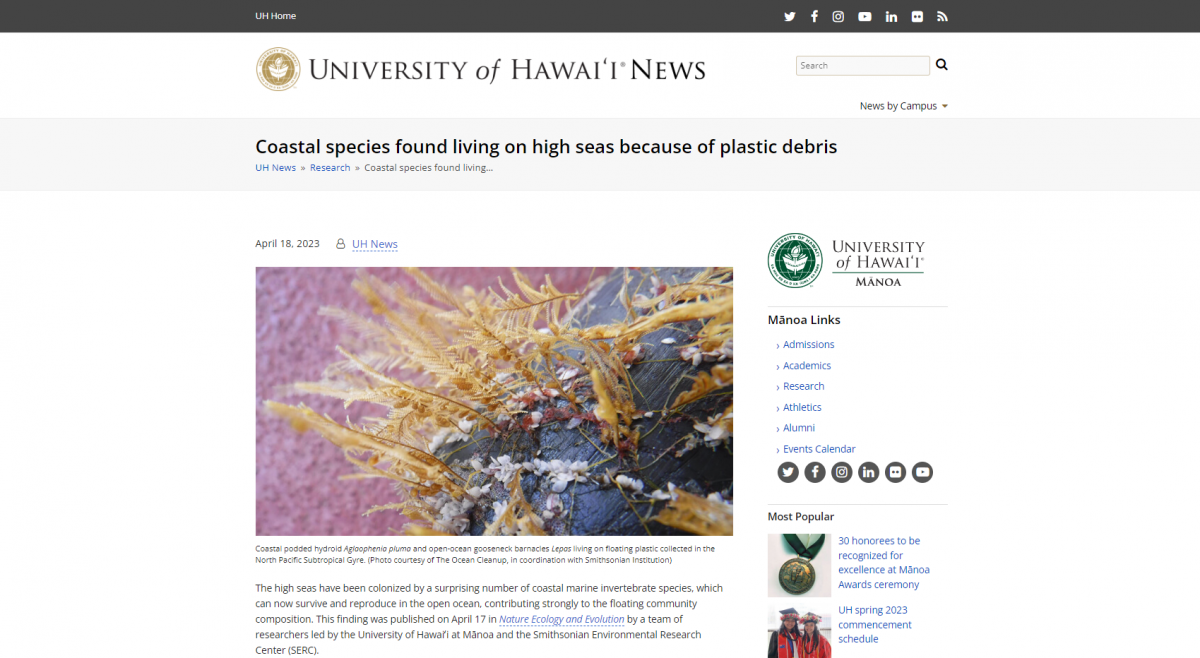Diverse coastal organisms are surviving and thriving (and reproducing!) on floating plastic debris in the open ocean, hundreds of miles from the coast. Scientists are studying a region in the North Pacific Ocean, known as the Great Pacific Garbage Patch, where plastic pollution—carried by ocean currents—accumulates. The study, published in Nature Ecology & Evolution, reports that "coastal species with an array of life history traits can survive, reproduce, and have complex population and community structures in the open ocean. The plastisphere may now provide extraordinary new opportunities for coastal species to expand populations into the open ocean and become a permanent part of the pelagic community, fundamentally altering the oceanic communities and ecosystem processes in this environment with potential implications for shifts in species dispersal and biogeography at broad spatial scales."
As of April 2023, the study was mentioned by over 200 media outlets, including NPR, Scientific American, The Wall Street Journal, and ScienceAlert. The study has been shared on social media over 200 times.
Article
Extent and reproduction of coastal species on plastic debris in the North Pacific Subtropical Gyre
Scientific Journal
Nature Ecology & Evolution
Publication Date
April 17, 2023
Learn more about SERC's Marine Invasions Lab!
Media Highlights
Altmetric
Overview of attention received. Data provided by Altmetric.
All research outputs
Top 5%
#4,599 of 23,636,051 outputs
Outputs from Nature Ecology & Evolution
Top 1%
#7 of 1,876 outputs
Outputs of similar age
Top 1%
#72 of 241,822 outputs
Outputs of similar age from Nature Ecology & Evolution
#1
of 43 outputs
The data above are updated as of April 28, 2023.
More details and data, updated continuously, are available on Altmetric.
Media Contact
[Media Contact]



